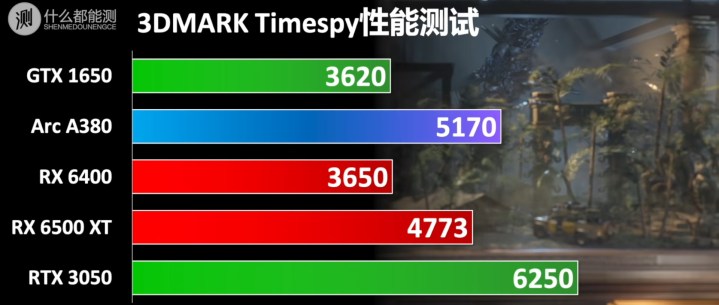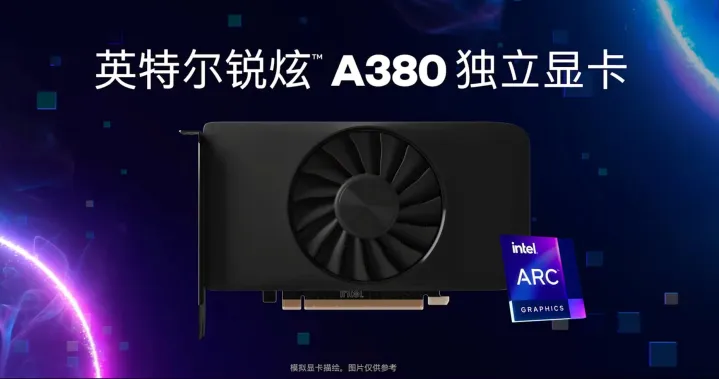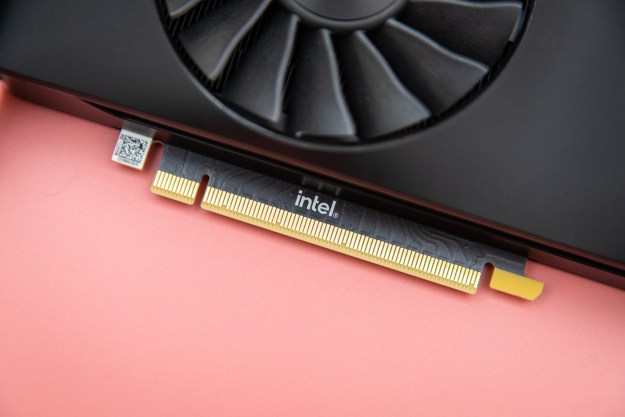Ever since it was quietly released, the Intel Arc A380 discrete GPU has mostly collected unfavorable reviews. Although early benchmarks were promising, testing the GPU in real-world gaming scenarios revealed that it can’t even keep up with the entry-level AMD Radeon RX 6400.
Bit now there’s information that comes directly from the source: Intel revealed the official data for the A380 GPU, including benchmarks and specifications. With some honest insight into the actual performance of the GPU, things are starting to look a little less bleak for the Intel A380.

The Intel Arc Alchemist A380 news is starting to give us whiplash — is it going to be a decent budget GPU or will it be crushed by the weight of the competition coming from similar, yet well-tested and proven options by Nvidia and AMD? The jury is still in on that one, but at least this time around we have received a round of reliable information on the GPU.
Following previous leaks and benchmarks, we now have word from Intel itself, complete with the full specifications of the company’s first discrete GPU and a long list of benchmarks. Although benchmarks that come directly from the manufacturer might seem sketchy to some, Intel seems to have done its due diligence in ensuring that the results don’t skew in its favor, so the tests look quite believable. Let’s dig in.
The Intel Arc A380 comes with a total of 1,024 FP32 cores (8 Xe-cores) and 6GB of GDDR6 memory clocked at 16Gbps across a 96-bit bus. The clock speed can be boosted up to 2.35GHz on the reference model, and we already know that Gunnir’s custom version goes up to 2.45GHz. The TBP of the A380 ranges from under 75 watts at 2GHz to over 80W with a boosted clock speed.
Intel also mentions a power option that goes beyond 87 watts, which is likely going to be utilized by custom designs of the card, such as the aforementioned dual-fan Gunnir GPU with a 92-watt TBP.
Attached to the specifications came a list of 20 benchmarks in which Intel compares its graphics card to the Nvidia GeForce GTX 1650 and the AMD Radeon RX 6400. Each GPU was tested on a system with an Intel Core i5-12600K, which is one of the best Intel processors, an MSI Pro Z690-A motherboard, and 32GB of DDR4 RAM,as well as a 4TB NVMe SSD. It’s unlikely that the Arc A380 would find itself in a system like that, being an entry-level card, but all three GPUs were on an even playing ground as they were all tested with the same components.

Intel put the three graphics cards to the test in 1080p gaming on medium settings. In all of the games, the Intel Arc A380 was able to achieve over 60 frames per second (fps). However, it was still beaten by its rivals in the majority of them, and when it won, it was by a relatively small margin. This is what gives these benchmarks more weight — Intel didn’t try to inflate the GPU’s accomplishments and showed it like it is. The benchmarks are also fairly consistent with what we’ve already seen before.
You can view the full list of fps results over at Wccftech, the publication that was able to procure these results from Intel. To give you a quick summary, Intel’s Arc A380 was able to compete with the AMD Radeon RX 6400. It was mostly outperformed by the Nvidia GeForce GTX 1650, but again, there were exceptions. Intel actually managed to beat AMD in Total War: Troy, The Witcher 3, F1 2021, and Naraka: Bladepoint.
We’ve seen that the GPU does well in synthetic benchmarks, beating even the AMD Radeon RX 6500 XT (and falling behind the RTX 3050, albeit not by a whole lot), so it’s possible that the problem lies not in the hardware, but the software. Perhaps with further optimizations on Intel’s end, the card’s power will become more apparent in gaming. Right now, Intel needs to compete on pricing and availability, and with rapidly falling GPU prices, that could prove to be tricky.
Editors' Recommendations
- Intel may fire the first shots in the next-gen GPU war
- How Intel could win the GPU war this year
- Intel claims up to 268% gaming boost with latest Arc graphics drivers
- Intel may already be conceding its fight against Nvidia
- Intel’s forgotten GPUs are still happening




